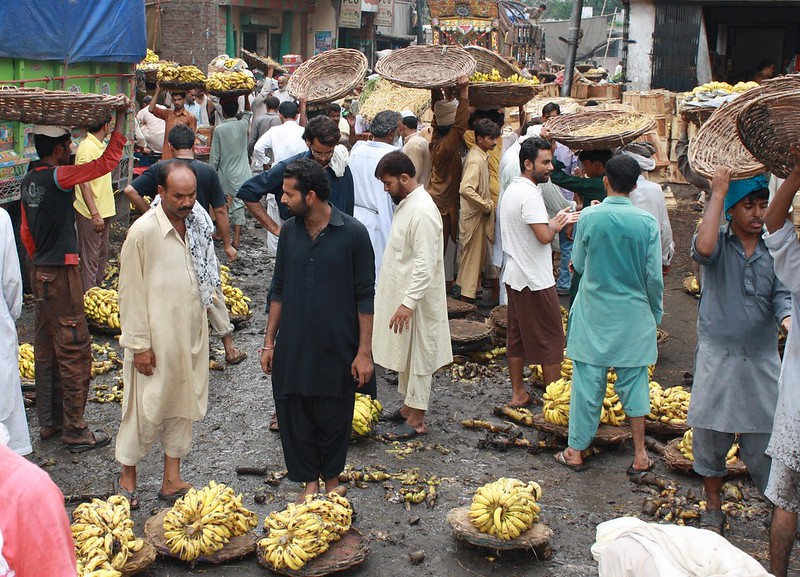On October 27,2018, the Anti-Encroachment drive started in Karachi, and other cities of Pakistan, in order to free-up the public spaces which were used by vendors. Due to the illegally occupied spaces by the vendors, people have faced traffic problems in their daily routines. The pedestrian walking spaces have been illegally occupied by vendors, causing trouble for the commuters.
 Source: Flickr
Source: FlickrIn order to free-up the illegally occupied business spaces, the Supreme Court of Pakistan ordered an anti-encroachment drive in different cities. Law enforcement carried out the drive by court order. Mr. Nazar M. Laghari, consultant board of revenue submitted the report. He referenced the law of Sindh on public property, The Removal of Encroachment Act of 2010. The illegal occupants of public spaces were provided with notification, before anymaction were made against them.
The notification stated that shops, cabins and stalls that were illegally installed on pedestrian walks, or on government’s land without government’s permission, will be demolished. It further stated that the spaces, under construction and illegal floors of buildings will be destroyed with the help of the gas, water and electricity department. The plans of action were presented to the Supreme Court. The government of Sindh were provided with pictures of the demolished buildings three months before, and after the actions were taken.
Though the encroachment drive was done to free-up the public spaces and provide ease of mobility to the citizens, the government faced an unintended problem. There were no plans made by the government for the people who lost their source of income. The vendors and hawkers were not provided with any alternatives or any compensation for their losses. These people depended their livelihood on the daily wages from their sales. They were left with no source of income for their families.
By collecting information through different sources, it is estimated that so far, 3757 shops have been demolished. It affected almost 17,500 workers and has increased the rate of unemployment in the country. If it is estimated that on an average basis, five people worked on each shop that has been demolished. Assuming that each worker have seven people dependent on him, the number of people who were affected, is in the vicinity of 140,000 people.
One question arises. Has the encroachment drive attained its aim to free-up public spaces? The answer is not as expected. The people have again started to build their shops and stalls in the demolished areas. After all the destruction caused by the anti-encroachment drive, the government has failed to achieve their goal.
The government should have been policing in the areas which have been cleared to ensure the vendors don’t come back. Furthermore, they should have made some alternate plans for the vendors, or compensate them their loss of income. This would have ensured that these people don’t get involved in criminal activities and not contribute to unemployment.
Authors:
Unzila Atiq
Roubaisha Zahid
Sumbul Younus
Sadaf Tanzeem Khan
Students of Jinnah University For Women in the Department of Business Administration, Karachi, Sindh, Pakistan.
